Maimonides Medical Center unveiled its latest art exhibition, “Lines of Sight,” on Nov. 20, transforming the creative expressions of 37 art therapy patients into a powerful showcase of healing.
Featuring vibrant works crafted with colored pencils, oil paints, and mixed media, the biannual event — part of the Department of Psychiatry’s Wellness and Recovery Program — has celebrated the therapeutic power of art since 2008.
According to the American Art Therapy Association, art therapy reduces conflict and distress, improves cognitive function, fosters self-esteem, and builds emotional resilience and social skills by engaging the mind, body, and spirit in ways distinct from verbal communication.
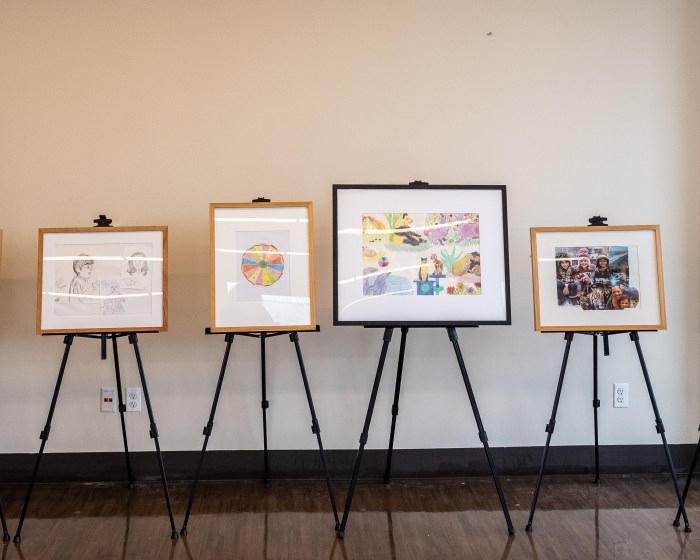
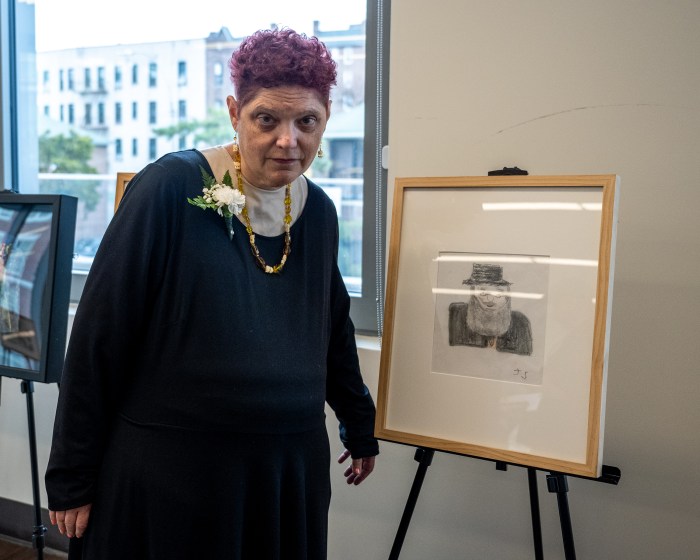
George Spinella, whose drawing “The Butterfly” was featured in the exhibition, said he discovered his creative side after joining the therapy art program. He told Brooklyn Paper his newfound talent was empowering, despite his brother traditionally being considered the family artist.
“It feels good that I can create something and be proud of it,” said Spinella, who praised Gwendolyn Kurtz, a licensed creative art therapist and director of therapeutic activities at Maimonides’ Department of Psychiatry.
“Art is really an essential part of my recovery,” Spinella said. “Gwen is a fabulous artist and social worker, and she really helped me with my mental illness and my creativity.”
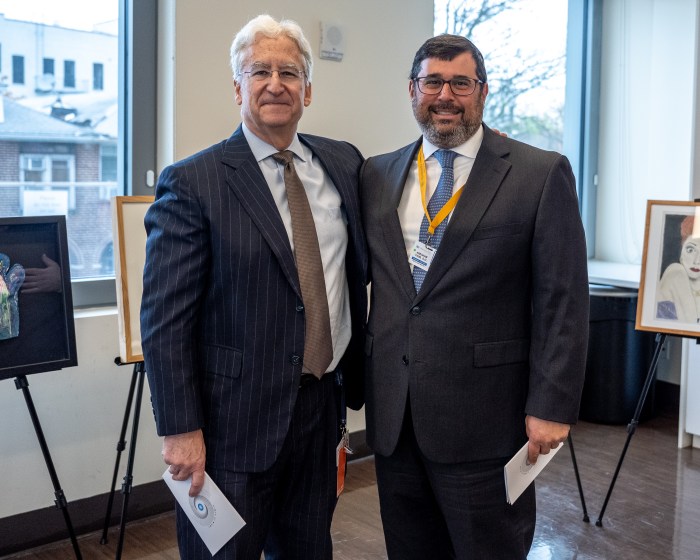
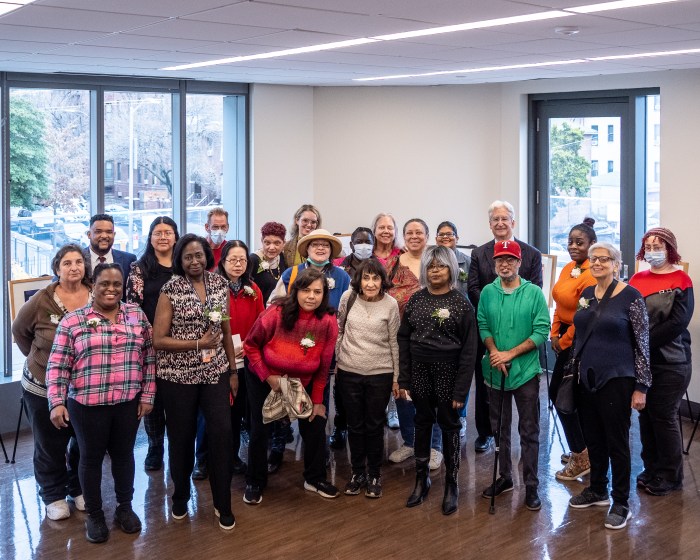
Kurtz, who curated the exhibition, said art helps participants process traumas they cannot express verbally.
“Often trauma experiences might have happened for a person during a time where they were even pre-verbal,” Kurtz told Brooklyn Paper. “Art making gives us an opportunity to really explore our emotions, our experiences, our feelings, our relationships, without relying on words.”
Muriel Fenner’s piece, titled “Laughter,” featured actress and comedian Lucille Ball.
“I think we all need laughter and joy at this time, and that’s what she reminds me of, fun,” she said.
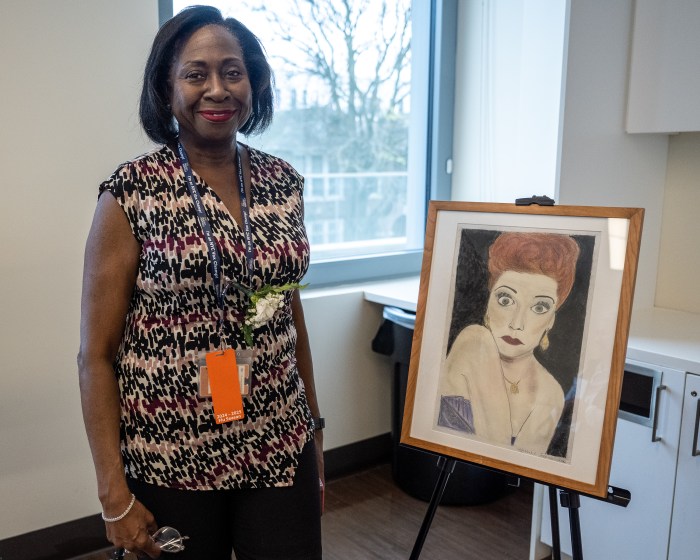
Fenner told Brooklyn Paper that art is an outlet for self-expression.
“Sometimes in the middle of the night, when I can’t sleep, I’ll get up and paint,” Fenner said. “It might not be great, but it makes me feel better.”
In her artist statement, Deborah Parada described her comic book-style drawing, “Man Tamer,” as a personification of her dissatisfaction with herself and others. Parada, who couldn’t attend the exhibition because she was recovering from facial feminization surgery, spoke to Brooklyn Paper by phone.
Parada said she began drawing at an early age out of “necessity,” as she lived with relatives who deprived her of possessions. School supplies, however, were always available.
“I could just grab a pencil and start drawing things. As a kid, I remember if I saw something, I would rush to my notebook to sketch it,” Parada said.
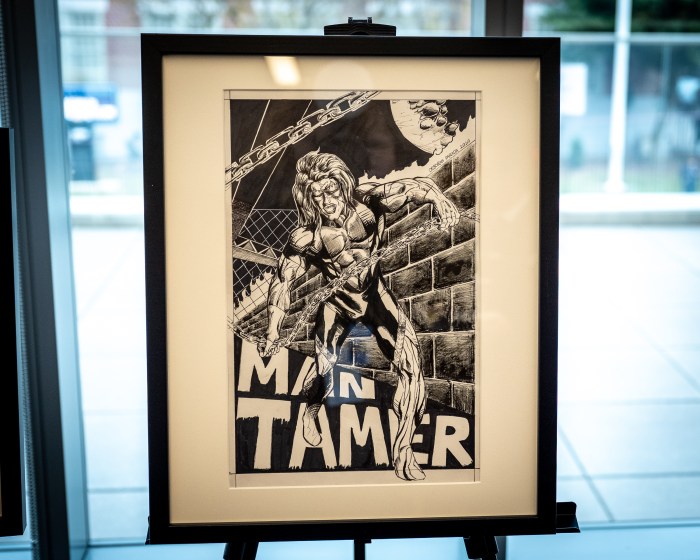
Although she gravitates toward drawing superheroes, Parada mostly keeps her art private or shares it with close friends.
“They’re not like commercially viable superheroes [or] characters. I make them to tackle my own personal, specific issues, needs, [and] thoughts and are made to satisfy no one else but me,” Parada said. “In some fashion, drawing for me is almost like a transgressive act. But it’s a safe place to do so. It’s okay for me to be angry in my drawings, and it’s okay for me to discuss the things that I want to and the little comics I make.”
Parada, who began her gender-transitioning journey in 2013 at age 18, said “Man Tamer” represents a “big, tough” figure she wished had been there to support her during difficult times.
“He would stare down anybody who would be my abuser,” Parada said. “And I conceived him just for that, and when I put him there, it was almost as if to say, ‘I’m not alone.’ I would have liked to have an actual tough guy stare them down. ‘Deborah is a minority. Deborah is not someone you can push around. Deborah is here to get something done, and I’m gonna crack the whip.’”
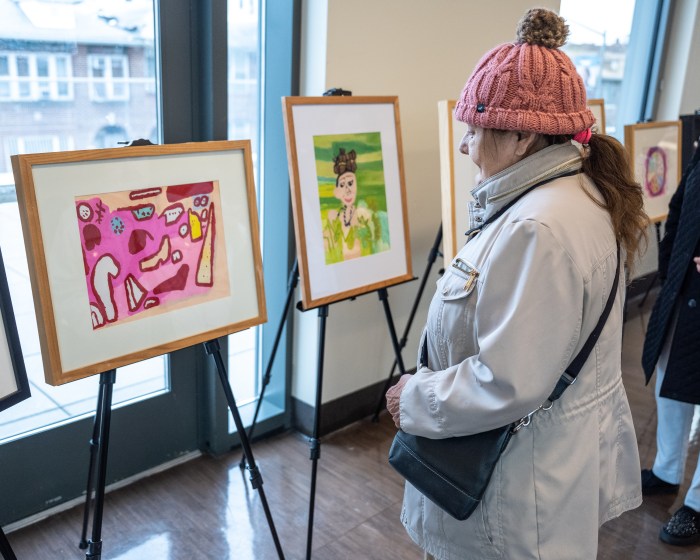
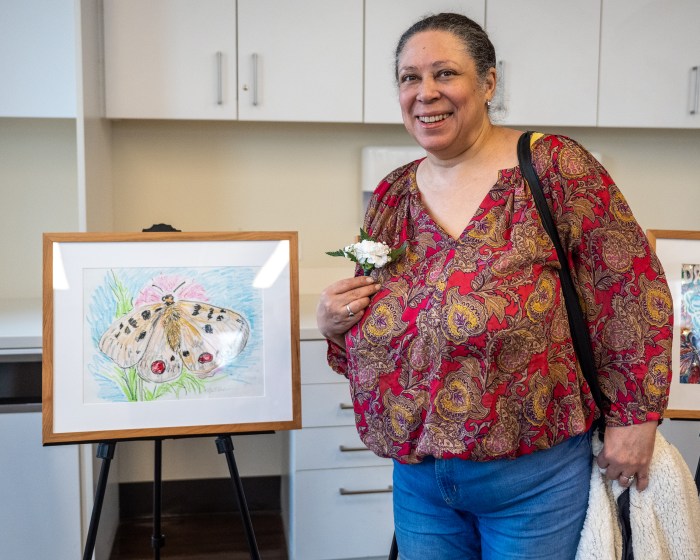
Julio Lopez, director of the Wellness Recovery Program at Maimonides Community Mental Health Center, said art allows patients to process trauma in a safe and comfortable way.
“[Patients] might not be able to talk about what’s bothering them, what their stresses are,” he said. “Art gives them the possibility and ability to express themselves through drawing, through crocheting, or whatever art form they’re making, and find their voices so they can stabilize symptoms and eventually be able to talk in other groups and even in their individual sessions.”
